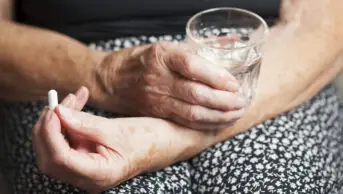
There has been much media coverage of the under-representation of women in leadership positions in the workplace over the past few years. Back in May 2012, figures compiled by BBC News showed that fewer than one third of the UK’s most influential jobs are held by women.
This is not a recent phenomenon. Since the 1960s, women have been increasingly joining the workforce in graduate jobs such as medicine and pharmacy. But the number of women reaching senior positions does not reflect their influx into the workforce and more research is required to discover why this is the case[1]
.
In pharmacy, the “tipping point” when women pharmacists outnumbered men happened in 2001. In 2011, 63% of pharmacy graduates were women.
It has become apparent that there is an under-representation of women in senior leadership positions in pharmacy. For example, in the south west of England in October 2012, 4 out of a potential 17 chief pharmacists in acute trusts were women. This did not reflect the predominantly female workforce in the pharmacy profession and raised the question of whether or not this was typical throughout England.
To find out more, in the summer of 2013 I sent a postal questionnaire to all chief pharmacists in acute trusts in England. A 60% return rate gave me confidence in the results, which revealed that chief pharmacists across England are predominantly men with a split of 65:35, similar to the picture in the south west. Moreover, they manage a predominantly female workforce with a 26:74 male to female split.
My findings support some but not all of the theories in literature about why men are over-represented in senior management positions. For example, although more than half of the respondents believed there had been no barriers to them attaining their chief pharmacist position, the potential unsuitability of working part-time in senior posts was one theme that emerged. Impact on family life was another factor that women chief pharmacists believed hindered their career progression. Other theories, such as a lack of role models, were not supported by the findings.
There are an increasing number of female pharmacists joining the pharmacy workforce so it would be reasonable to expect that over the next 20–30 years the situation will be somewhat different to what we see today. Even so, there is still a need to promote the role of women in senior positions in pharmacy and ensure the visibility of those that are already in those positions.
More needs to be done to find out what pharmacists think about the gender gap and find out what they perceive are the barriers to reaching the position of chief pharmacist. Research should also be done to examine the gender of applicants for chief pharmacist posts and the resultant appointees. Are women applying and not being appointed or simply not applying for these posts in the first place?
I personally never intended to become a chief pharmacist but when the opportunity presented itself, I took it.
Jane Coleborn is chief pharmacist at Great Western Hospitals NHS Foundation trust. The study outlined was completed as part of her postgraduate study.
References
[1] McKinsey & Company. Women matter: making the breakthrough. Available at: http://www.mckinsey.com/client_service/organization/latest_thinking/women_matter (accessed 3 October 2014).


